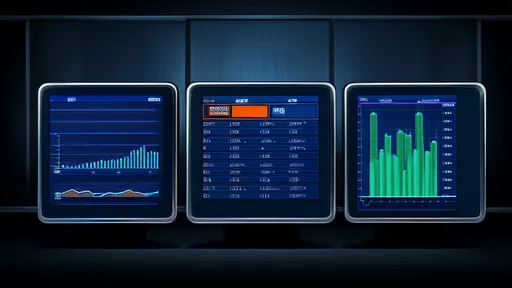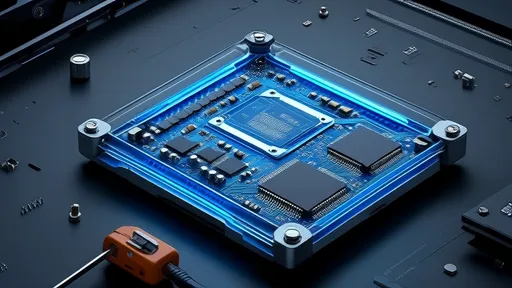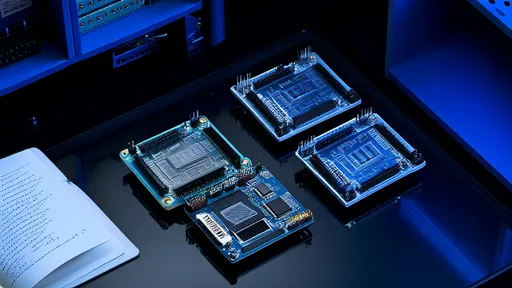The industrial landscape is undergoing a seismic shift as connectivity becomes the backbone of modern manufacturing. At the heart of this transformation lies the critical decision of selecting real-time communication protocols for Industrial Internet of Things (IIoT) deployments. This choice often determines the success or failure of digital transformation initiatives in harsh industrial environments where microseconds matter and reliability is non-negotiable.
Real-time communication in industrial settings presents unique challenges that commercial IoT protocols simply cannot address. The electromagnetic interference from heavy machinery, vibration from production equipment, and extreme temperatures create an environment where only the most robust protocols survive. Unlike office networks where occasional latency goes unnoticed, industrial automation demands deterministic behavior where message delivery timing is as important as the message itself.
Several protocol families have emerged as frontrunners in this space, each with distinct philosophical approaches to solving the real-time communication puzzle. The traditional fieldbus protocols, while battle-tested over decades, now face stiff competition from Ethernet-based industrial protocols that promise higher bandwidth and easier integration with enterprise systems. This evolution mirrors the broader technological shift from specialized industrial networks toward converged IT/OT architectures.
Time-Sensitive Networking (TSN) has recently emerged as a game-changing standard that brings determinism to standard Ethernet. By introducing traffic scheduling and time synchronization mechanisms at the hardware level, TSN enables different types of traffic to coexist on the same network without interfering with time-critical control messages. This technology is particularly valuable for mixed-criticality applications where real-time control data must share infrastructure with bulk data transfers for predictive maintenance analytics.
The industrial protocol selection process requires careful consideration of multiple technical and operational factors. Latency requirements vary dramatically across applications - while motion control systems might demand sub-millisecond response times, environmental monitoring could tolerate several seconds of delay. Network topology plays an equally important role, as some protocols work better in star configurations while others excel in line or ring architectures common in factory automation.
Interoperability concerns have taken center stage as manufacturers seek to avoid vendor lock-in while maintaining real-time performance. This tension has given rise to protocol gateways and translation solutions that attempt to bridge different industrial networks, though these often introduce their own latency and complexity. The growing adoption of OPC UA as a unified information modeling framework represents another approach to this challenge, providing semantic interoperability above the transport layer.
Security considerations have become paramount in protocol selection as industrial systems increasingly connect to enterprise networks and the cloud. Many legacy industrial protocols were designed for isolated networks and lack basic security features, making them vulnerable in modern connected environments. Newer protocols incorporate encryption, authentication, and authorization mechanisms from their inception, though these security features sometimes come at the cost of increased protocol overhead and reduced determinism.
The bandwidth explosion in industrial applications continues to reshape protocol requirements. High-resolution machine vision systems, vibration monitoring with hundreds of channels, and digital twin implementations all demand protocols capable of handling massive data volumes without compromising real-time characteristics. This has led to interesting hybrid approaches where time-critical control messages use deterministic protocols while large data transfers leverage standard industrial Ethernet with quality-of-service prioritization.
Wireless protocols present both opportunities and challenges for industrial real-time communication. While eliminating cabling offers significant cost savings and flexibility in brownfield installations, maintaining determinism in radio environments remains difficult. Emerging technologies like 5G URLLC (Ultra-Reliable Low Latency Communication) and specialized industrial wireless protocols aim to bridge this gap, though wired solutions still dominate for the most demanding applications.
The human factor in protocol selection should not be underestimated. The availability of skilled personnel familiar with a particular protocol stack often proves as important as technical specifications. Many organizations find themselves constrained by their existing workforce's expertise, leading to continued use of legacy protocols even when technically superior alternatives exist. This reality has prompted protocol developers to focus on training programs and certification schemes to ease adoption barriers.
Looking ahead, the industrial protocol landscape appears poised for continued evolution rather than consolidation. While standardization efforts have made progress, the diversity of industrial applications ensures that no single protocol will dominate all use cases. The most successful implementations will likely employ protocol-agnostic architectures that can adapt as requirements change, ensuring longevity in an environment where technological obsolescence remains a constant threat.
The selection of industrial real-time communication protocols ultimately represents a strategic business decision as much as a technical one. The chosen protocol becomes the nervous system of the digital enterprise, influencing everything from operational efficiency to innovation capacity. As Industry 4.0 initiatives mature, organizations that approach protocol selection with both technical rigor and business acumen will gain significant competitive advantage in the increasingly connected industrial world.

By /Jul 11, 2025

By /Jul 11, 2025

By /Jul 11, 2025

By /Jul 11, 2025

By /Jul 11, 2025

By /Jul 11, 2025

By /Jul 11, 2025

By /Jul 11, 2025

By /Jul 11, 2025

By /Jul 11, 2025

By /Jul 11, 2025

By /Jul 11, 2025

By /Jul 11, 2025

By /Jul 11, 2025

By /Jul 11, 2025

By /Jul 11, 2025

By /Jul 11, 2025

By /Jul 11, 2025